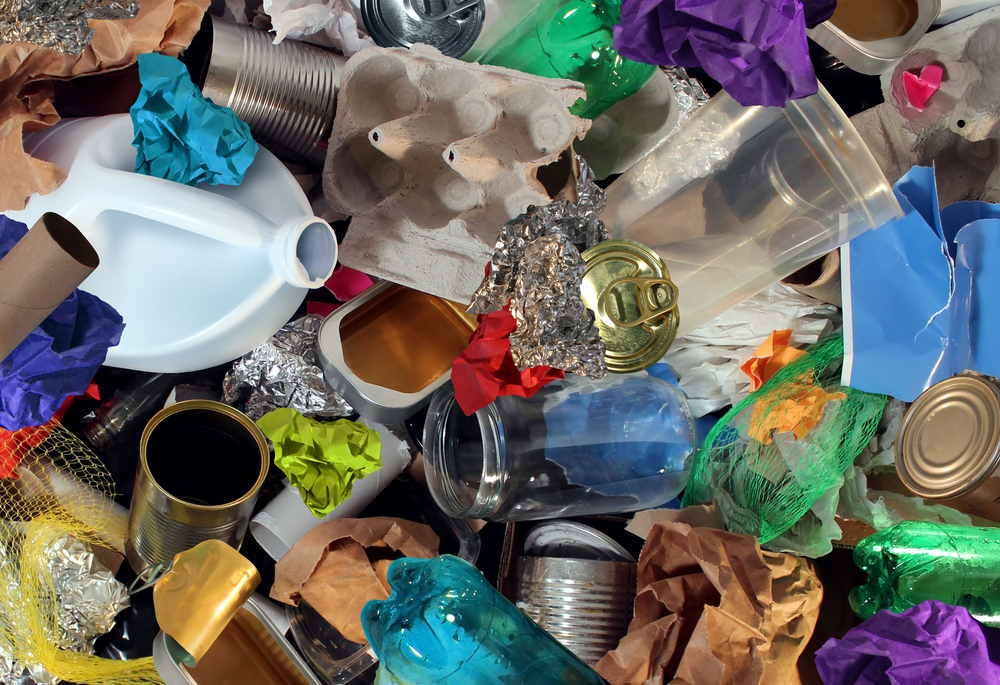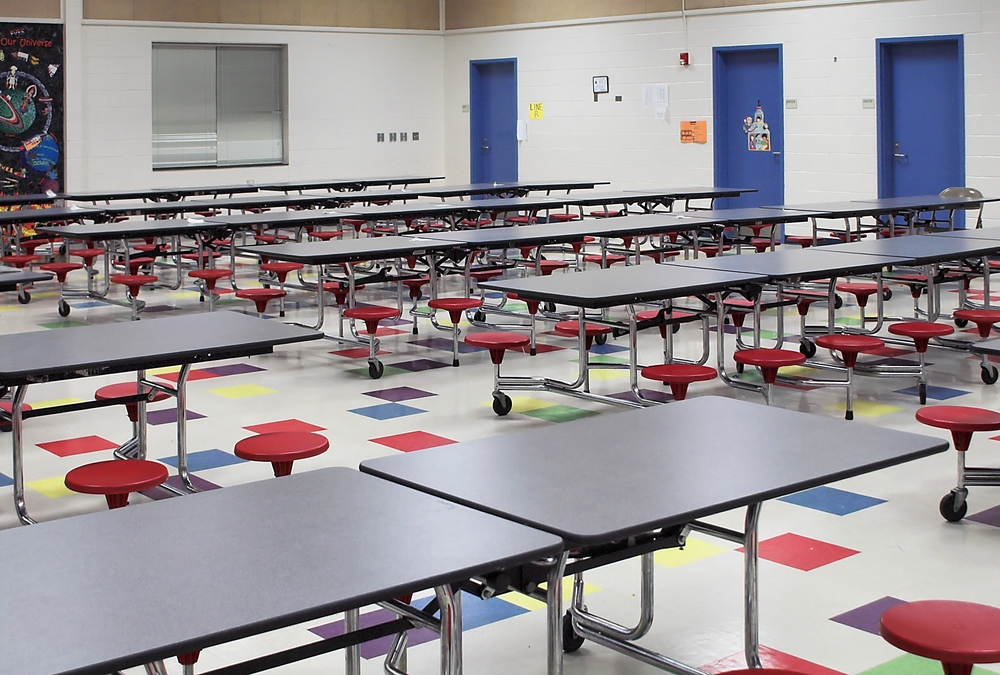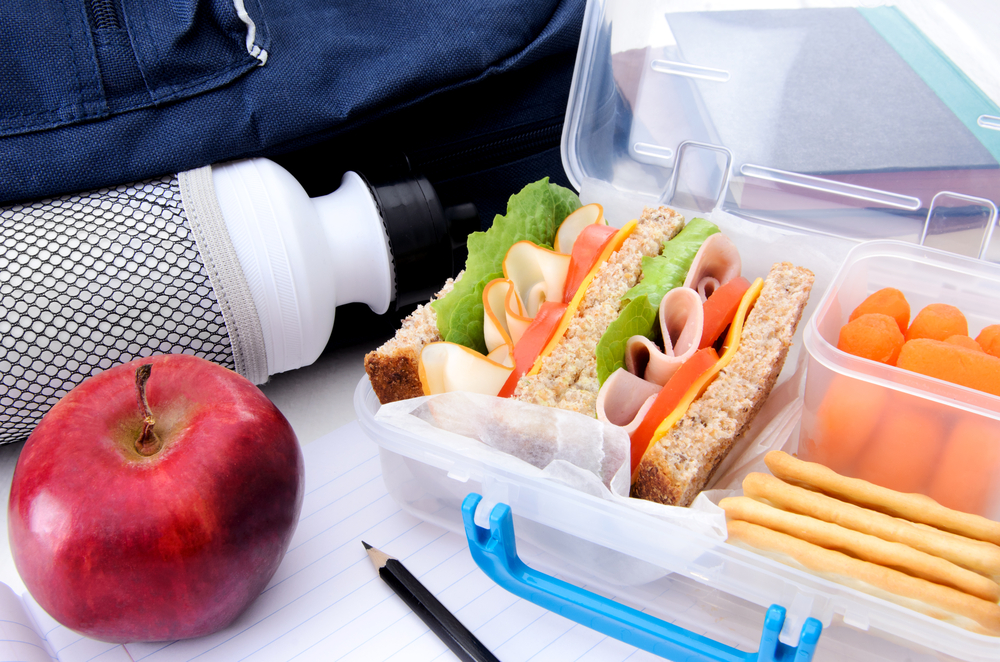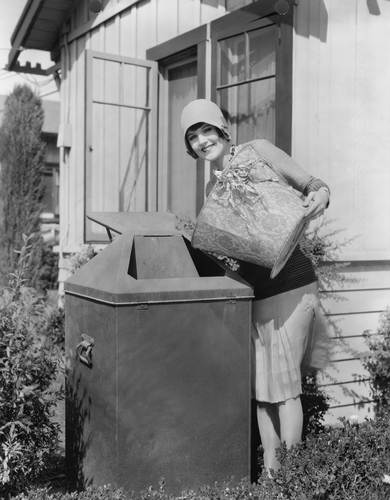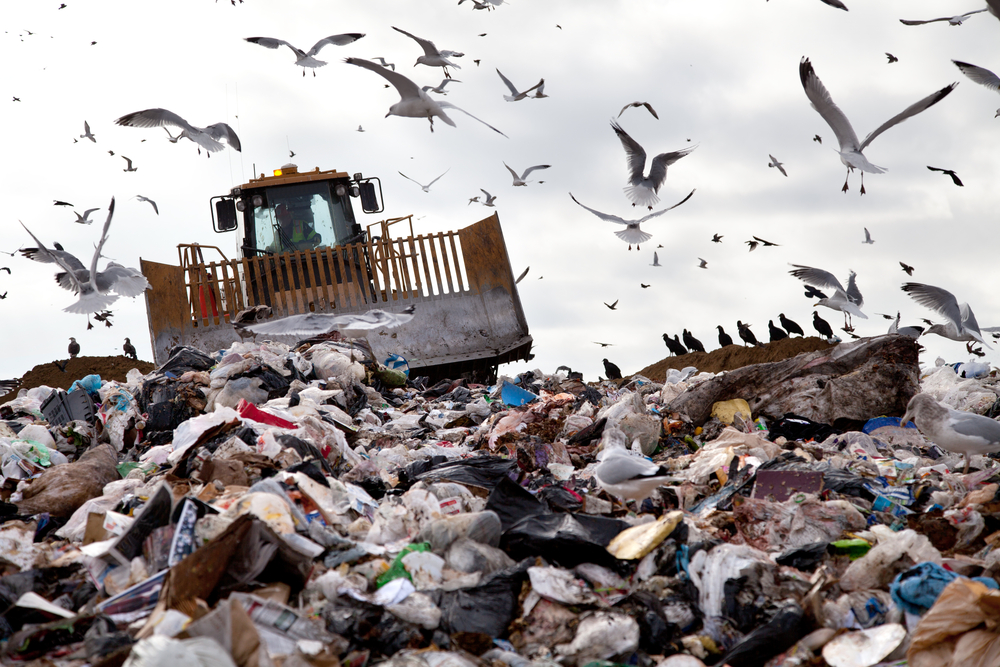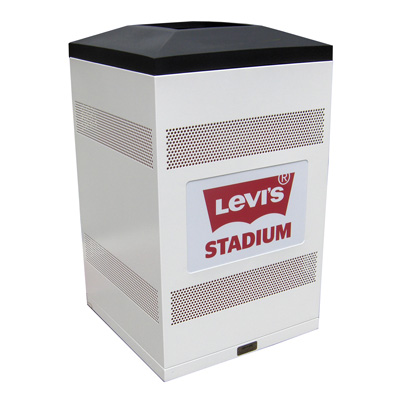
The Securr Flex Series Trash Cans and Recycle Bins are Securr’s newest offering in waste and recycling collection. This new model, the Model FX50-01, can be customized in several ways to suit many applications. Using corrosion resistant galvanealed steel and UV resistant powder coat, these durable containers will last for year in the harshest of environments. A rigid plastic liner is included and the tops are custom molded from plastic and will stand up to years of heavy use.
Make your Securr Trash Can reflect your needs by choosing the container color, plastic lid color, vinyl labels to show what goes inside the container, and decorative 1/4″ inch holes. You can also add a graphics panel for your logo or message, which will be vinyl wrapped with your design and inset in the container. If you choose to include your city logo or message, just email your artwork to us at [email protected].
These 50 gallon containers are ideally suited for stadium concourses (this model is currently used at Levi’s Stadium, the new home of the San Francisco 49ers), arenas, sports complexes, concert halls and movie theaters, office complexes, transportation centers, school campuses, and shopping malls. Learn more about this product here.
Securr, a Trade Name of Compumeric Engineering Inc., has a long tradition of growth and evolution. While our history includes manufacturing precision components and assemblies for aircraft, lighting and contract manufacturing, we have become a diverse company that now specializes in refuse and recycling containers. Another very successful Compumeric company called BearSaver, which is the undisputed world leader in animal-resistant refuse and recycling solutions. Our many years of experience in the waste industry has allowed us to develop an intimate understanding of what is important to meet our customer’s needs.


